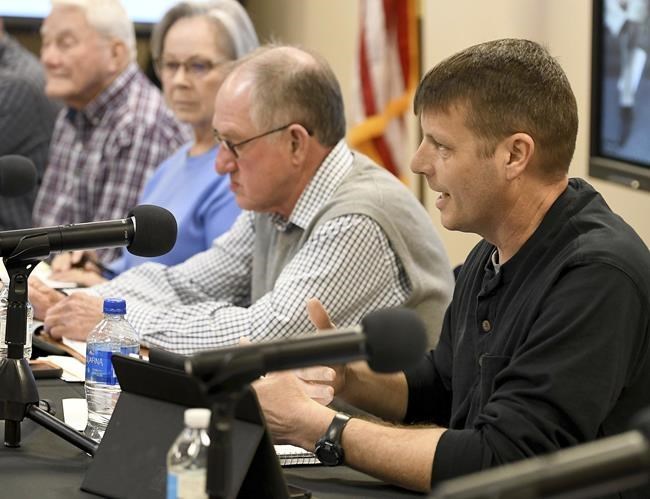
ELECTION FRAUD FAKERY WORKING
An increasing majority of Americans lack confidence that elections in America today reflected the will of the people, and about half think it likely that a future election in the United States will be overturned for partisan reasons, according to a new CNN poll conducted by SSRS.
There's been a shift in the partisan dynamic driving concerns about the possibility of an overturned future election. While the 50% overall who considered such a prospect at least somewhat likely was similar to the 51% who felt that way in September, Democrats were now more apt to see an overturned election in the future than Republicans. In the new poll, 56% of Democrats saw it as likely vs. 48% of Republicans. In September, 57% of Republicans thought that was likely while just 49% of Democrats agreed.
Also in the new poll, 56% of respondents said they have little or no confidence that American elections reflect the will of the people, up from 52% who felt that way in September and 40% in January 2021. Almost three-quarters of Republicans were now skeptical that elections are representative (74%), as were 59% of independents, and only a third of Democrats (32%). The results reflected a significant decline in confidence over the past year among both independents (45% lacked confidence in January 2021) and Democrats (9% felt that way a year ago).
More broadly, fewer now said that American democracy is under attack than did late last summer (52% now vs. 56% in September), and the share who said the attack on the US Capitol on January 6, 2021, represented a crisis for democracy stood at 28%, down from 36% shortly after the attack last year.
The poll's findings come as the House select committee investigating the January 6 attack has issued new subpoenas to key members of former President Donald Trump's inner circle as it investigates the origins of the attack.
Most Americans saw the January 6 attack on the Capitol as a problem for democracy (28% said it's a crisis, 37% a major problem, and another 20% called it a minor problem), and 54% said not enough has been done to penalize those who rioted at the Capitol.
Republicans in particular, though, have shifted in their views of the attack over the past year. While 15% of Republicans said in January 2021 the storming of the Capitol was not a problem, 27% felt that way now. Likewise, while 38% of Republicans a year ago said enough had been done to penalize rioters, 71% felt that way now.
A plurality of all Americans saw the select committee's work as a fair attempt to determine what happened on January 6 (44%), while about a third saw it as a one-sided effort to blame Trump (36%) and 20% said they hadn't heard enough about it to say. About three-quarters of Democrats (76%) said it was a fair investigation, while two-thirds of Republicans (67%) dubbed it a one-sided effort to blame Trump.
Still, those who said the January 6 attack was a problem for democracy were not very likely to see the select committee's work as a path to helping protect American democracy. Overall, 47% said that the attack was a problem and that the panel's work was unlikely to result in changes that would help protect democracy, while 37% said protective changes were the likely outcome.
Beyond the overall partisan divide around these issues, the poll found that those who were most concerned about either the January 6 attack or the health of democracy generally were the most ideological partisans, suggesting the issues may not become turning points for the upcoming midterm elections.
Perceptions of the January 6 attack as a crisis for democracy were concentrated among liberal Democrats, 62% of whom felt that way, compared with 37% of moderate or conservative Democrats, 13% of moderate or liberal Republicans and 11% of conservative Republicans. And views that democracy itself was under attack were likewise strongest among conservative Republicans (72%) vs. 53% of moderate or liberal Republicans, 40% of moderate or conservative Democrats and 57% of liberal Democrats.
Looking back at the outcome of the 2020 election, little has changed in how Americans viewed Joe Biden's victory. While there was no evidence of widespread fraud or vote tampering, 37% said they believed Biden did not legitimately win enough votes to be president. More than 1 in 5, or 22%, said there was solid evidence that Biden did not win enough votes, even though such evidence does not exist. Among Republicans, 70% said Biden's victory was not legitimate, and nearly half, 45%, believed falsely that there was solid evidence of that.








